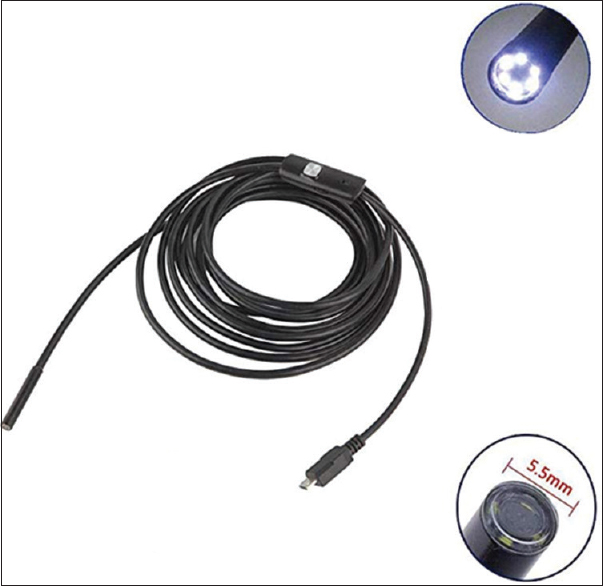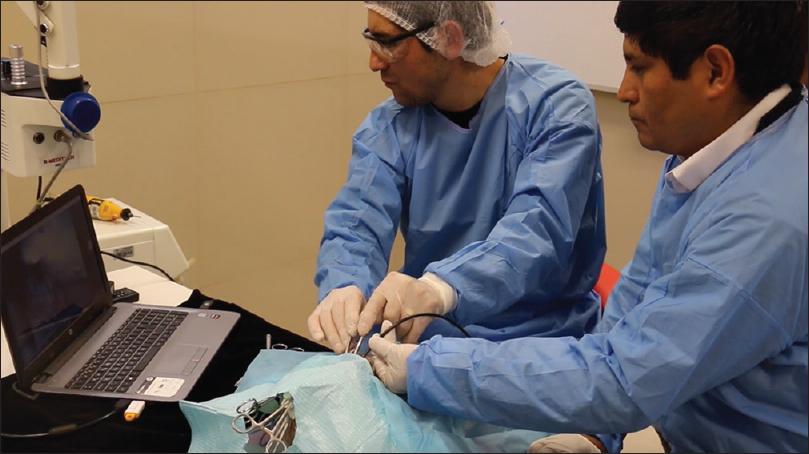- Department of Neurosurgery, Helsinki University Hospital, Helsinki, Finland
- Centro de Investigación en Anatomía y Fisiologia Alto Andina, Universidad Andina del Cusco, Cusco, Peru
- Laboratorio de Microneuroanatomía, Universidad Andina del Cusco, Cusco, Peru
- Department of Neurosurgery, Umberto I General Hospital, Università Politecnica delle Marche, Ancona, Italy
- Department of Neurosurgery, Ospedali Riuniti Marche Nord, Pesaro, Italy
Correspondence Address:
Joham Choque-Velasquez
Department of Neurosurgery, Helsinki University Hospital, Helsinki, Finland
DOI:10.4103/sni.sni_293_18
Copyright: © 2019 Surgical Neurology International This is an open access journal, and articles are distributed under the terms of the Creative Commons Attribution-NonCommercial-ShareAlike 4.0 License, which allows others to remix, tweak, and build upon the work non-commercially, as long as appropriate credit is given and the new creations are licensed under the identical terms.How to cite this article: Choque-Velasquez J, Miranda-Solis F, Colasanti R, Hernesniemi J. Modified pure endoscopic approach (MAPEnd) in neurosurgery. Surg Neurol Int 15-Jan-2019;10:4
How to cite this URL: Choque-Velasquez J, Miranda-Solis F, Colasanti R, Hernesniemi J. Modified pure endoscopic approach (MAPEnd) in neurosurgery. Surg Neurol Int 15-Jan-2019;10:4. Available from: http://surgicalneurologyint.com/surgicalint-articles/9166/
Dear sir,
Recently, we published the paper “Modified pure endoscopic approach (MAPEnd) to the pineal region: a proof of concept of an efficient and inexpensive surgical model based on laboratory dissections.”[
The MAPEnd is carried out entirely under endoscopic vision without the use of an operative microscope, differently from endoscopic-assisted procedures. Moreover, the MAPEnd relies on the use of an inexpensive and openly available borosocope [
We adapted conventional microsurgical instruments, and the entire procedure was performed under high magnification by connecting the borescope to a high-definition computer screen [
We believe that a specific training is needed to master the so-called “eye-hands blind technique,” which is essential for performing endoscopic procedures.[
In December 2017, we organized the first cadaveric demonstration in pure endoscopic skull base and midline intracranial approaches in Cusco, Peru. Different neurosurgical approaches were performed using the MAPEnd model: more precisely, subfrontal, retrosigmoid, subtemporal, anterior interhemispheric routes, as well as the previously described supracerebellar infratentorial approach to the pineal region were meticulously accomplished.
The various anatomical structures, as seen through the different approaches, were carefully dissected aiming to demonstrate the utility and the effectiveness of the MAPEnd model (as illustrated in the video 1:
The subfrontal MAPEnd allowed us to identify all the main anterior skull base neurovascular structures, such as the internal carotid artery, the anterior cerebral artery complex, the optic nerves and chiasma, the lamina terminalis, and the proximal portion of the Sylvian fissure. The anterior interhemispheric MAPEnd permitted us to expose the neurovascular structures inside the interhemispheric fissure, such as the anterior cerebral arteries, the corpus callosum, and the cingulate gyrus. In addition, the right lateral ventricle and the third ventricle were accessed by a transcallosal route. The tentorial incisura and the surrounding neurovascular structures (third and fourth cranial nerves, basilar artery, posterior cerebral and superior cerebellar arteries, and brainstem) were exposed through a subtemporal MAPEnd. Finally, a low retrosigmoid MAPEnd allowed us to expose the vertebrobasilar system, the origin of the posterior cerebellar artery, and the lower cranial nerves as well.
Our proposed prototype was developed in the laboratories of the Universities of Cusco Peru (Universidad Andina del Cusco and Universidad San Antonio Abad del Cusco) with cadaveric specimens that are usually employed for neuroanatomical teaching purposes. The costs of our surgical model, which includes a high-resolution computer screen (about 1500 US dollars) and a waterproof boroscope (about 10–100 US dollars) are around 1600 US dollars. These expenses are completely affordable by young neurosurgeons, fellows or residents, as well as by institutions such as hospitals or surgical training centers, even in economically challenging environments, since the price is far cheaper than that of neurosurgical endoscopes or training surgical microscopes. In addition, nowadays, most of the students and professionals use a personal computer for their daily activities. Moreover, differently from the training surgical microscopes, our model is lighter and easily portable. Thus, our prototype could make the microsurgical endoscopic training more accessible in low-income centers.
Here, we emphasize the utility and simplicity of our MAPEnd model as an inexpensive neurosurgical training tool for performing different skull base and midline intracranial neurosurgical approaches.
Thus, our “boroscopic” surgical model might represent a simple and effective alternative to conventional endoscopic techniques for training purposes. Furthermore, after a proper validation; the model could also be a very useful tool for clinical procedures, particularly in economically challenging environments.
Financial support and sponsorship
Nil.
Conflicts of interest
There are no conflicts of interest.
References
1. Last accessed on 2018 August 06. Available from: https://www.amazon.com/Waterpoof-Borescope-Endoscope-Inspection-Function/dp/B01536VSQ0.
2. Choque-Velasquez J, Colasanti R, Collan J, Kinnunen R, Rezai Jahromi B, Hernesniemi J. Virtual reality glasses and “Eye-hands blind technique” for microsurgical training in neurosurgery. World Neurosurg. 2018. 112: 126-30
3. Choque-Velasquez J, Miranda-Solis F, Colasanti R, Ccahuantico-Choquevilca LA, Hernesniemi J. Modified pure endoscopic approach to the pineal region: A proof of concept of an efficient and inexpensive surgical model based on laboratory dissections. World Neurosurg. 2018. 117: 195-8
4. Thaher F, Kurucz P, Fuellbier L, Bittl M, Hopf NJ. Endoscopic surgery for tumors of the pineal region via a paramedian infratentorial supracerebellar keyhole approach (PISKA). Neurosurg Rev. 2014. 37: 677-84








